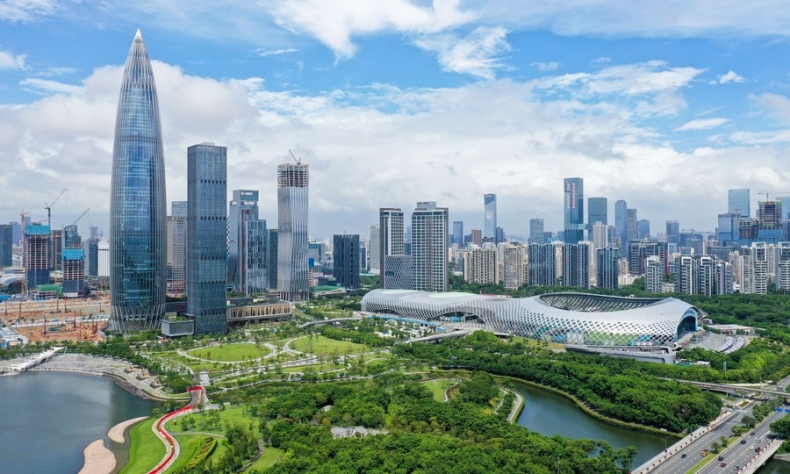The Path to Prosperity

Today’s ‘Chinese mountain’ is already a source of great satisfaction and pride for all Chinese, and it will only become more prosperous in the future.
The teachings of Confucius illuminate the path for achieving our dreams in life, and one key teaching in particular has been illuminating China’s path toward becoming a moderately prosperous—or xiaokang—society. It is that taking a moderate approach to building well-consolidated social and economic foundations is essential for achieving prosperity. The concept is far from new, but it is standing the test of time as China enters a new era of development.
The Communist Party of China (CPC) has a strong understanding of this notion, and all Party leaders have been demonstrating it in their work. The main result has been the eradication of absolute poverty last year, which completed China’s process of building a moderately prosperous society in all respects.
This idea also has its roots in Confucianism, and the term describes a society with a large middle-income group, where everyone is modestly well-off and everyone’s basic needs are met. Although a few adaptations are needed in order to face new global challenges, its efficiency as a guiding principle has continued to this day.
China began to implement its 14th Five-Year Plan (2021-25) in 2021, and the new plan reflects China’s changing goals as it transitions from working toward becoming a xiaokang society to developing as one.
Confucius once said that by carrying earth basket by basket, one could make a mountain. Since the founding of the CPC a century ago, the Party leadership has been carrying these baskets of earth. The baskets have contained social, educational and economic reforms, and cultural, technological and environmental advancements, which have added up year by year. Today’s “Chinese mountain” is already a source of great satisfaction and pride for all Chinese, and it will only become more prosperous in the future. To ensure this is the case, these kinds of developments should continue with moderate intensity in a manner that is in harmony with the current global context.

Furthering reform
Instituting reform is one of the greatest challenges faced by developing countries, but reform is vital for creating the necessary foundations for development.
The main goals developing countries must achieve are: the creation of better living conditions for the population; reducing social inequalities by facilitating equal access to retirement and pension systems; facilitating equal access to a solid, comprehensive and hi-tech public health system; the comprehensive development of the real estate market, prioritizing the provision of decent housing for all; the improvement of national security mechanisms, concerning both the protection of national sovereignty and the response to natural disasters; the implementation of business reforms that allow companies to reduce costs and increase their productivity; creating conditions to improve the business environment through incentives and supply a more secure environment to protect intellectual property rights.
These are all crucial goals for ensuring China’s development in the future, as increasingly protectionist actors overseas are likely to interfere with global trade. For this reason, it will be essential to further strengthen the already robust Chinese domestic market. This can be achieved by optimizing the income distribution structure, improving the social security system, encouraging demand for services, and creating greater integration between educational establishments and companies to focus more on preparing young people for employment.

Investments should also be made to modernize old neighborhoods in China’s cities and towns. This will generate economic growth that will be passed on to local populations, increasing their purchasing power. China will also need to implement new quality standards for the development of its internal markets, and to guide consumption, saving and investment. Increasing the production of value-added products, increased use of the digital economy, the easing of some restrictions on consumer purchases, and maximizing the consumption potential of China’s regional areas will all contribute to the strengthening of China’s domestic market. The market will also benefit from increased development of industrial supply chains and quality control.
Scientific capacities
Notably, the growing demand for food will be one of the big challenges in the coming years. Innovation and new technology will be vital to expanding and maximizing the food production sector. These innovations should necessarily include the improvement and protection of agricultural land, the improvement of irrigation and desalination facilities, as well as the reuse of waste water. China must also increase the use of intelligent equipment that optimizes sowing and harvesting.
China will need to work toward maximizing agribusiness inputs by using precision agriculture, automation, robotics, and genomic biotechnology. These and other measures together will contribute to the creation of a national food security system, and help create conditions conducive to expanding domestic demand.
There is no doubt that innovation is the key to development. The Fourth Industrial Revolution is in progress, and the current COVID-19 pandemic is accelerating its impact on products, services and industries. Technological innovation will be responsible for our progress and growth in the new era, both as countries and as a global community. The Chinese Government is aware of this and is also the world’s best government at planning. It is prioritizing research, development and application of innovation across China to accelerate the development of a modern, systematic industrial system.
China is also setting other goals in order to progress as a moderately prosperous society. These include achieving scientific and technological self-sufficiency, the construction of international science and technology hubs, the further development of 5G and fiber-optic networks, and the improvement of the industrial Internet of Things to empower micro, small and medium-sized enterprises.

China is also establishing facilities that foster the development of science and technology. These include demonstration zones that encourage commercial cooperation, innovation centers that serve as platforms for research and development, smart factories that integrate advanced information technology with production equipment, and green manufacturing units that preserve the environment by creating energy-efficient products and supply chains.
These examples demonstrate how the ancient teachings of Confucius now translate into goals that will further the development of China and the improvement of Chinese people’s lives long into the future.
The CPC is leading China along the path to prosperity, doing so at a moderate pace with moderate goals. This time-tested basket-by-basket approach will make the mountain bigger and more prosperous for both China and the world.
The author is director of the China-Brazil Center for Research and Business.
 Facebook
Facebook
 Twitter
Twitter
 Linkedin
Linkedin
 Google +
Google +










